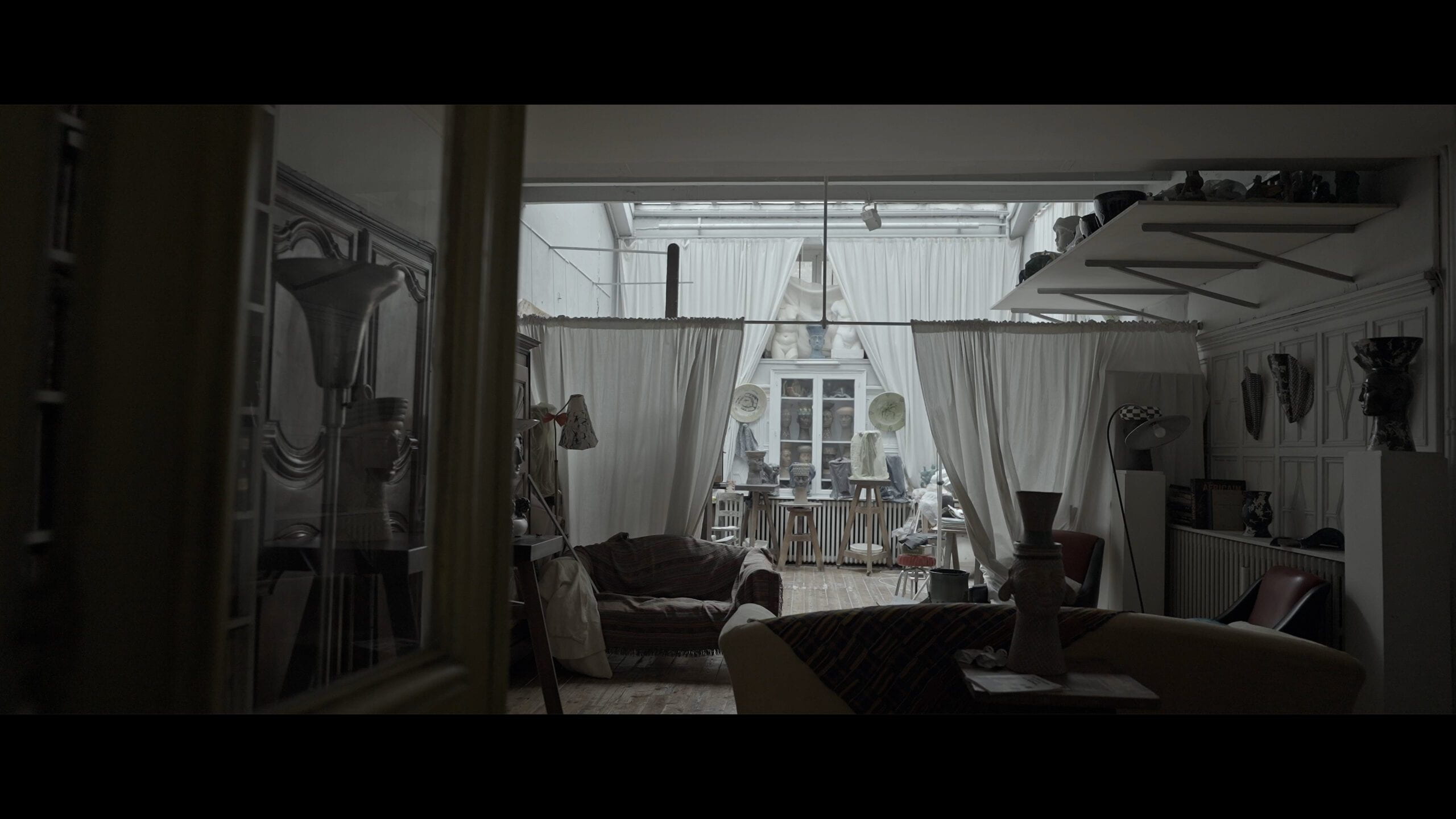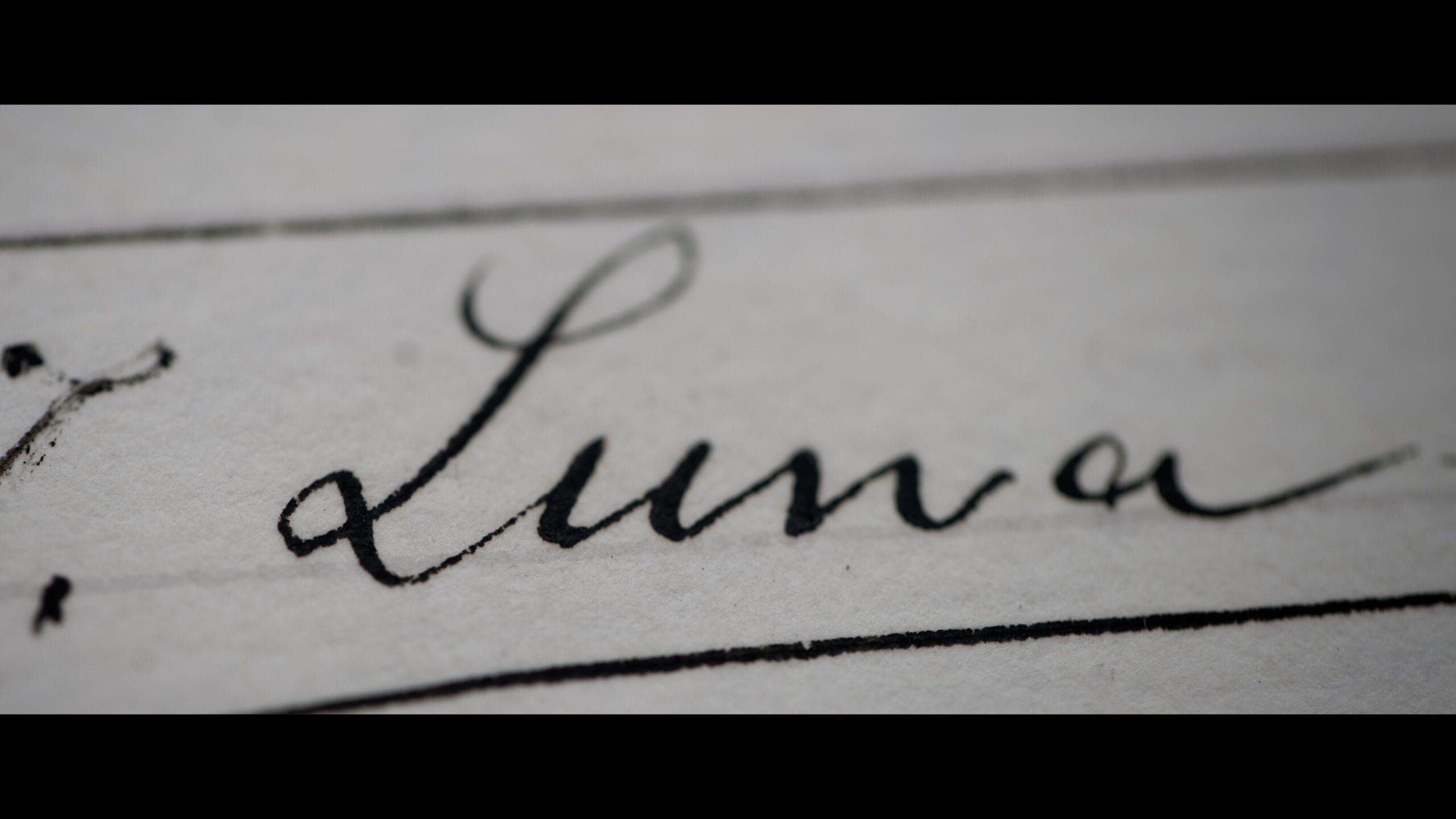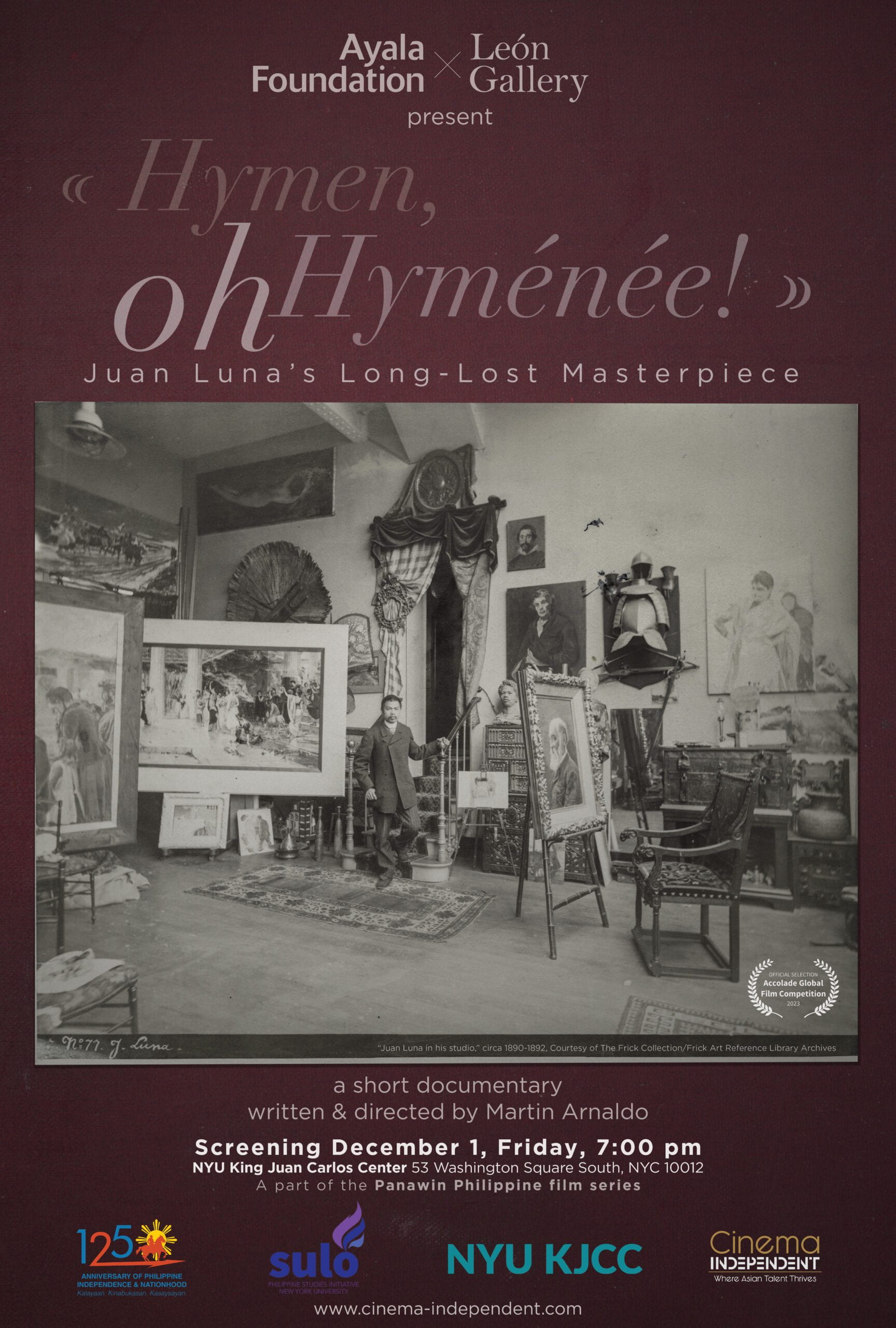2023 | 21 m | The Philippines and France
Written and Directed by Martin Arnaldo
Date: Friday, December 1, 2023 | 7:00 PM
Venue: NYU King Juan Carlos Center | 53 Washington Sq S, NYC 10012
Free and open to the public.
RSVP Link: http://bit.ly/panawin2023f


Synopsis
The documentary weaves multiple narratives into one story: There’s Juan Luna, an “indio” winning recognition for his country against all odds in 19th century Europe; members of today’s Philippine diaspora like the filmmaker, striving to make sense of their identity; and the modern-day Filipino, navigating a present that is constantly confronted by events and figures in the country’s past.
Notes on the Film
Martin Arnaldo was born in the Philippines and moved to France at a very early age when his father Choy Arnaldo, a famous broadcast journalist, took a position at the Paris-based UNESCO where he would work for the next 27 years. Growing up with hyper-consciousness about his Filipino roots, Martin often ruminated on his dual identity as Filipino and French and the ways he might reconcile their contradictions.
Among the Philippine historical figures that fascinated him was the 19th-century painter Juan Luna. Wanting to learn as much as he could about Luna and his works, Arnaldo would scour archives in France, Spain, and beyond, uncovering details and insights that he would share in published articles.
Luna, born in 1857 in the northern Ilocos town of Badoc, spent most of his early life in Manila where he studied at the Ateneo Municipal de Manila before enrolling at the Academia de Dibujo y Pintura. His art teachers convinced his parents to send their talented son, barely out of his teens, to pursue art studies in Madrid. As a dark-skinned colonial indio, Luna had to face the challenges of racial and class prejudice. Commissions and medals were withheld at times due to his “inferior” race and status. He, nevertheless prevailed despite the odds, and won acclaim in Madrid, Rome, and Paris, most notably garnering the gold medal in the 1884 Madrid Exposition of Fine Arts for his powerful work Spoliarium, now a Philippine national treasure. He proved that the so-called indio could be equal to anyone in genius and inspiration and lifted his native country along. In the Philippines, Luna is considered the country’s greatest 19th-century painter. For many, he’s just the country’s greatest painter, period.
Many of Luna’s works have been lost, a number of them during the wars that have devastated the Philippines and Europe. Any rare Luna painting that is rediscovered or that enters the auction house is a cause for sensation and celebration in the Philippine cultural world. In 2013, an old Spanish family sold Luna’s allegorical painting España y Filipinas at a Sotheby’s Hong Kong auction. To the disappointment of Filipinos, the winning bid of US$ 3.3 million went to the National Gallery of Singapore.
There was one Luna painting that had long fascinated art historians but was long thought lost. This was the 1887 Hymen, oh Hyménée! also known as La Boda Romana. It depicts a scene in an ancient Roman wedding ritual when the wife, trailed by a party of dancers and singers, enters the groom’s chamber. Luna exhibited the painting at the 1889 Exposition Universelle in Paris where it was awarded a bronze medal. The painting disappeared from public view afterwards although Luna was known to have kept it until his early death in 1899. Some few attempts in the course of the following century to find the painting and hopefully bring it home to the Philippines came to naught, only adding to the mystic of the painting as an impossible “holy grail.” Then after long and painstaking research, authentication, and negotiations, Jaime Ponce de Leon, the founder of the Leon auction gallery, finally managed to secretly acquire it from an old Spanish aristocratic family. He (re)patriated it to the Philippines in 2017 and kept it hidden and discrete until its 2023 unveiling and exhibition at the Ayala Museum.
It was for this event that the Ayala Foundation commissioned Arnaldo’s eponymous short documentary. Arnaldo would end up shooting footage in Paris, Venice, Rome, Madrid, and greater Manila. Contending with the short running time, he decided to keep the film’s focus on Luna’s struggles as an artist and as an indio grappling with the racial and class prejudices of his time. As for the tragic event when a jealous Luna shot at a door behind which Luna’s wife and mother-in-law were cowering, their death, and the trial in Paris that followed, Arnaldo has said in a press interview that he would be tackling this and its ramifications in a documentary series and a full-length feature film that he’s now focusing on.
In the course of producing Hymen, oh Hyménée! Arnaldo ruminated on how to find the relevance for modern-day Filipinos, native and diasporic, of the discovery of a 19th-century painting depicting ancient white Romans. A Philippine French living in Paris who had experienced racism himself, Arnaldo identified with Luna’s struggles and determination to succeed against all prejudices. And threading its way through the film, Arnaldo shares his reflections on the diasporic Filipino’s arduous search for identity and the ways that the past informs a cosmopolitan present.
Notes on the Director
Martin Arnaldo studied at Oxford and Boston College where he graduated summa cum laude in Philosophy. Back in France, he pursued a doctorate course under the novelist Milan Kundera whose discussions ignited a passion for narration and cinema, leading Arnaldo to take further studies in film.
As a Paris-based filmmaker, Arnaldo has worked on advertising campaigns featuring the likes of film personalities Aishwarya Rai and Penelope Cruz. In 2016, he became fascinated with the life and works of Juan Luna. He’s now working on getting other Philippine-European-based projects off the ground.
— Gil Quito, Curator
